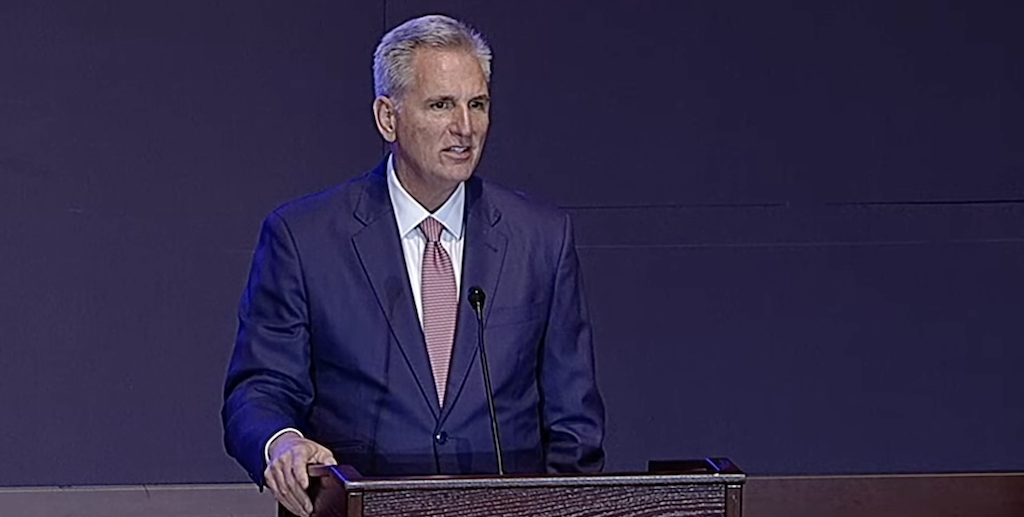New ACP Survey, FCC Fines VoIP Provider, Fifth Congressional Hackathon
Less than half of low-income survey respondents without internet had heard of the ACP.
Jake Neenan

September 15, 2023 – A lack of familiarity with the Affordable Connectivity Program is a major barrier to the program’s adoption, according to a survey published on Thursday by the nonprofit Connected Nation.
More than one third of low-income respondents had not heard of the ACP, according to the survey. The number was higher for low-income people with no home internet service, almost half of whom were not familiar with the program.
The $14 billion program, part of the 2021 Infrastructure, Investment and Jobs Act, provides a monthly internet subsidy of $30 for low-income households and $75 for residents of Tribal lands. More than 20 million households are enrolled in the program, only about half of the eligible population.
More than $6 billion is estimated to have been used up, with the remaining money expected to dry up in 2024. There have been repeated calls to renew the program, but it remains unclear whether Congress will do so.
The numbers come weeks after the Federal Communications Commission, the agency responsible for administering ACP funds, and the Department of Housing and Urban Development announced a partnership to promote the program in public housing properties.
The survey, produced with support from AT&T, was conducted in five major U.S. cities – Milwaukee, Cleveland, Dallas/Fort Worth, Charlotte, and San Francisco – and reached over 1,700 total households.
It also found eligibility concerns to be the biggest reason for eligible respondents not signing up for the program. Almost a third of low-income households who chose not to participate in the ACP did so because they did not believe they were eligible.
FCC announces filing violation fine
The Federal Communications Commission announced on Thursday a fine against Stage 2 Networks over $300,000 for failing to file mandatory Universal Service Fund forms.
The company provides voice services over the internet. Voice service providers are required to contribute to the Universal Service Fund, which spends roughly $8 billion each year on four programs that subsidize the internet for low-income households, healthcare providers, schools, and libraries. Providers submit forms to the FCC to determine their contribution requirements.
The FCC, responsible through the Universal Service Administrative Company for collecting and administering USF funds, said in its order that Stage 2 failed to file any of these forms from February 2020 through August 2023. The company also missed certification requirements and ignored a notice from the commission, according to the order.
The company will have 30 days to pay the fine or submit a statement seeking a smaller penalty, and must file the various forms it missed in the last three years.
Multiple court cases alleging the USF is unconstitutional are pending. The conservative nonprofit Consumers’ Research has cases before the Fifth, Eleventh, and D.C. circuit courts arguing Congress gave the FCC illegal authority to collect a tax when it set up the fund in 1996.
The Sixth Circuit already struck down a similar petition from the group.
Fifth congressional hackathon
Congress held its fifth hackathon on Thursday, with lawmakers, staff, advocates, hackers, and developers convening to discuss implementing new technology on the Hill.
House Speaker Kevin McCarthy, R-California, and Minority Leader Hakeem Jefferies, D-New York, hosted the event. The House’s Chief Administrative Officer Catherine Szpindor also hosted, in the office’s first show of support for the hackathon.
McCarthy emphasized using artificial intelligence to streamline government programs.
“Think about all the data that the government has,” McCarthy said in an introductory speech. “Where’s the way we could use AI to provide it to the public in a different way?”
The hackathon comes after a flurry of AI hearings in Washington, with multiple Senate committees and the National AI Advisory Committee calling witnesses and discussing potential guardrails for companies looking to use the technology to automate decision making.










Member discussion